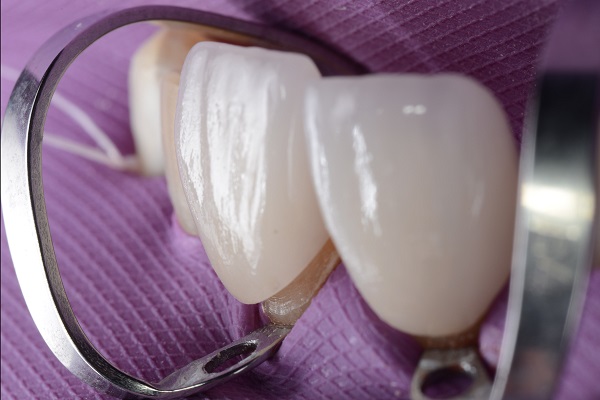How Long Will a Dental Laminate Last?

A dental laminate can be an effective way to protect your teeth from damage if you wear it every day, but how long can a laminate last before it’s not effective anymore? That depends on several factors, and we’ll examine them all here so you know just how long your laminate will keep doing its job.
What is a dental laminate?
A laminate is an ultra-thin layer of porcelain; usually, 1/1000th of an inch thick, that is added to the enamel. They are used to repair teeth that have small cracks or chips. If left untreated, these small imperfections can continue to spread across your tooth and lead to bigger problems in the future. The good news is laminates are highly effective at correcting these issues if they are caught early enough.
Once a laminate is applied, you’ll find that your teeth are stronger and more resistant to cracks or chips in the future. They can also make your smile look much more natural again. Make sure to schedule regular checkups with your dentist, especially if you have already had laminates placed on any of your teeth.
How long does a dental laminate last?
It depends on how well you take care of it. To help ensure your laminate lasts for as long as possible, here are some tips: Take good care of your teeth. Brush at least twice a day with fluoride toothpaste and floss once daily. For added protection against decay, schedule regular dental checkups every six months and have any cavities filled promptly. Keep in mind that some dental appliances, such as retainers and mouth guards, can’t be worn with a laminate because they may interfere with its adhesion to your teeth.
Your laminate may need to be replaced sooner if you have any oral health issues, such as tooth decay or periodontal disease. It should also be replaced if it’s damaged, which can occur when your teeth shift due to an injury or accident. The best way to check whether your laminate needs replacing is by scheduling an appointment with your dentist; he or she will assess its condition and let you know if it needs replacing. Finally, keep in mind that you won’t always need to replace your laminate because of damage; sometimes, they wear out over time and simply need changing for hygienic reasons. Your dentist will tell you if it’s time for a replacement.
When to consider replacements
The good news is that laminates usually last many years, and we don’t need to replace them unless we have damage or signs of wear and tear. If you’re noticing chips in your laminate, it might be time to consider a replacement. Chips will not only look bad but can also affect how long your entire restoration lasts. If you see small cracks or warping in your laminate, you should talk with us about replacing it because these flaws can lead to much bigger problems. If you notice staining or discoloration in certain areas of your mouth, talk with us about replacing your restoration at that time as well.
The easiest way to tell if your laminate needs replacement is by looking at it. We recommend checking your teeth once a week for signs of chips, cracks, discoloration, or warping that could indicate that you need new laminates.
Request an appointment here: https://hemetdentalcenter.com or call Hemet Dental Center: Brian Stiewel DDS, INC. at (951) 707-4366 for an appointment in our Hemet office.
Check out what others are saying about our dental services on Yelp: Dental Laminate in Hemet, CA.
Recent Posts
Over the years, tooth extraction has become more seamless than it once was. Many advancements have been made, which make the procedure more comfortable and less painful. However, it still helps to know what to expect so you can prepare.Getting a tooth extracted is not as scary as most think. In fact, most extractions only…
There are two types of tooth extractions: simple and surgical. Simple extractions are for teeth that are entirely exposed and can be accessed above the gumline. Surgical extractions require an incision into the gumline or connective tissue. The type a patient needs depends on the cause and state of the tooth. Here are six reasons…
A dental inlay is one of several restorative options available to repair damaged teeth and preserve oral health. When decay, fractures, or wear compromise the strength or structure of a tooth, dentists consider the severity and location of the damage to determine the most appropriate treatment. Understanding the differences between a dental inlay, onlay, filling,…
Whether you recently had a tooth extraction or are preparing for the procedure, there are a few guidelines to follow after oral surgery. Properly caring for your health can help you recover as healthily as possible and reduce the risks of complications. Here are some tips to help you have a comfortable and speedy recovery.In…


